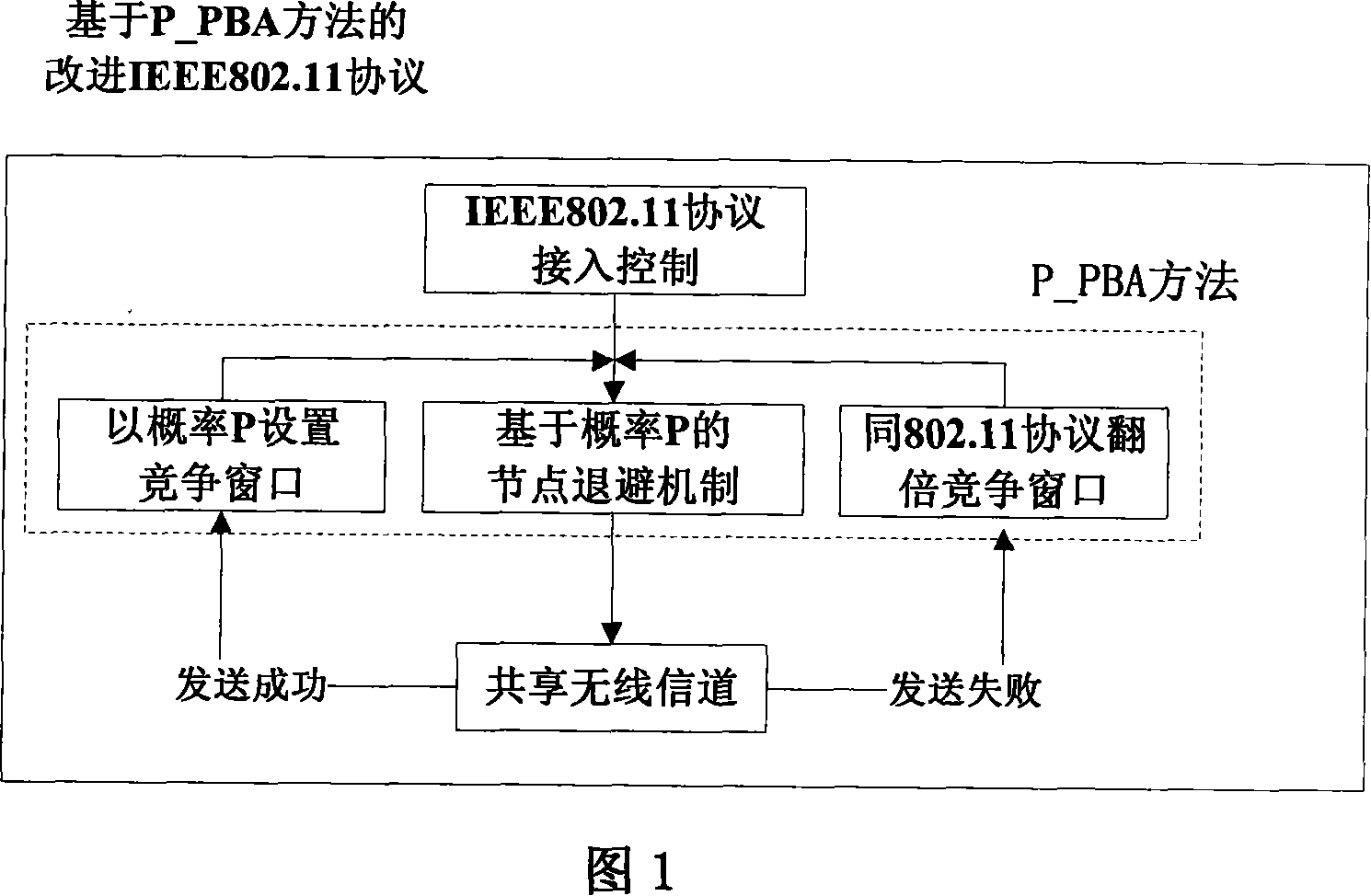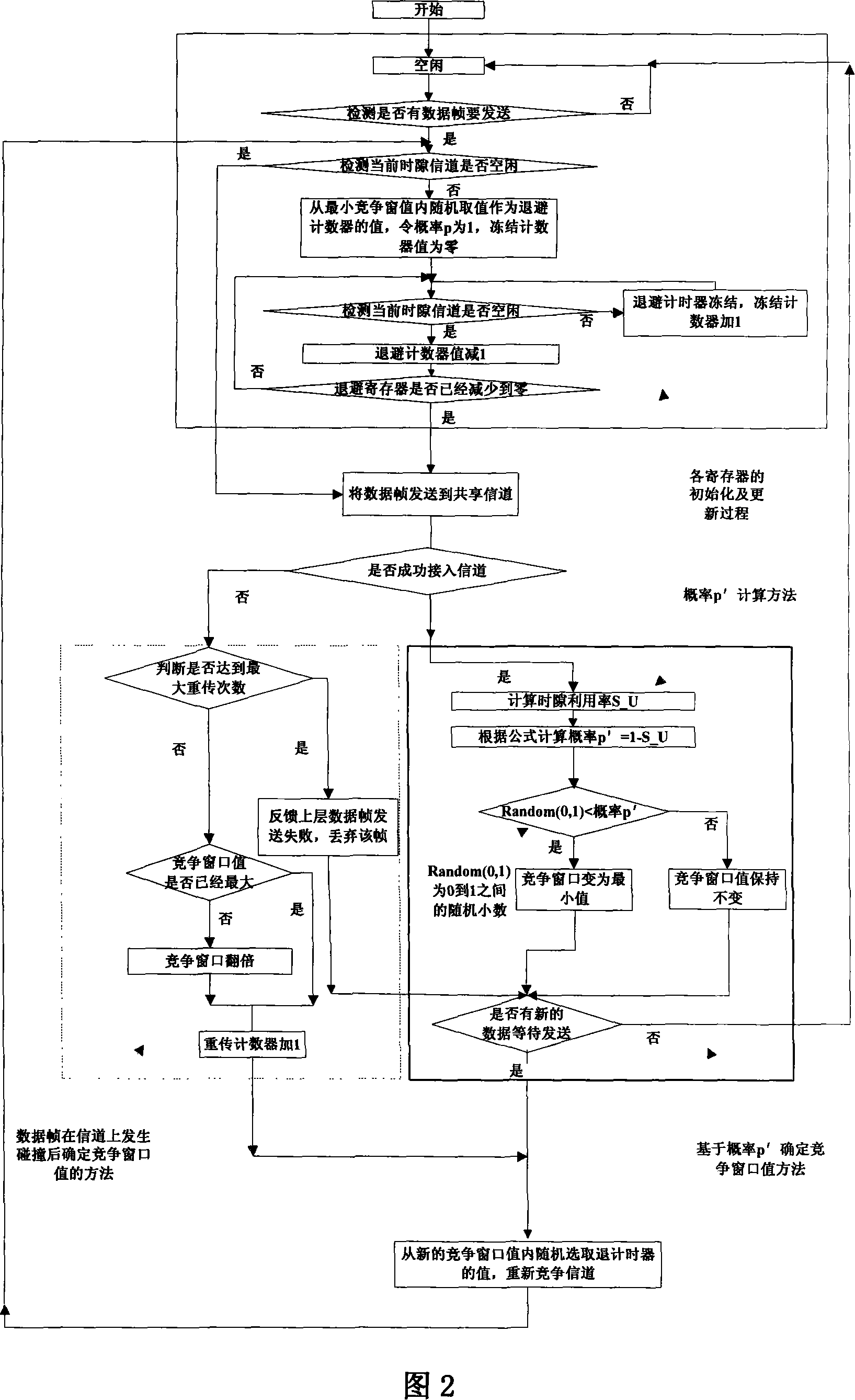A wireless competition access control method based on congestion degree possibility P
A technology of congestion degree and probability, applied in the field of competitive access control of wireless local area network, can solve the problems of increased wireless local area network delay, no real-time dynamic recording of network congestion degree, high collision probability, and reduced throughput performance. Packet loss rate, good delay performance, and the effect of reducing collision probability
- Summary
- Abstract
- Description
- Claims
- Application Information
AI Technical Summary
Problems solved by technology
Method used
Image
Examples
Embodiment Construction
[0017] The invention realizes embedding a probability-based node back-off mechanism in the IEEE 802.11 standard protocol, and proposes a P_PBA-based improved IEEE 802.11 protocol, through which the node controls the access channel of data frames waiting to be sent. The implementation of the present invention will be further described in detail below in conjunction with the accompanying drawings and specific embodiments.
[0018] Figure 1 is a schematic diagram of the principle of embedding the probability-based node back-off mechanism into the IEEE 802.11 standard protocol. Various mobile terminals in the wireless local area network, such as mobile phones and laptop computers, are used as network nodes, and the nodes send data according to the IEEE 802.11 standard. The present invention dynamically adjusts the contention window value of nodes, and determines the contention window value through time slot utilization rate and congestion degree probability P to control node data ...
PUM
 Login to View More
Login to View More Abstract
Description
Claims
Application Information
 Login to View More
Login to View More - R&D
- Intellectual Property
- Life Sciences
- Materials
- Tech Scout
- Unparalleled Data Quality
- Higher Quality Content
- 60% Fewer Hallucinations
Browse by: Latest US Patents, China's latest patents, Technical Efficacy Thesaurus, Application Domain, Technology Topic, Popular Technical Reports.
© 2025 PatSnap. All rights reserved.Legal|Privacy policy|Modern Slavery Act Transparency Statement|Sitemap|About US| Contact US: help@patsnap.com



